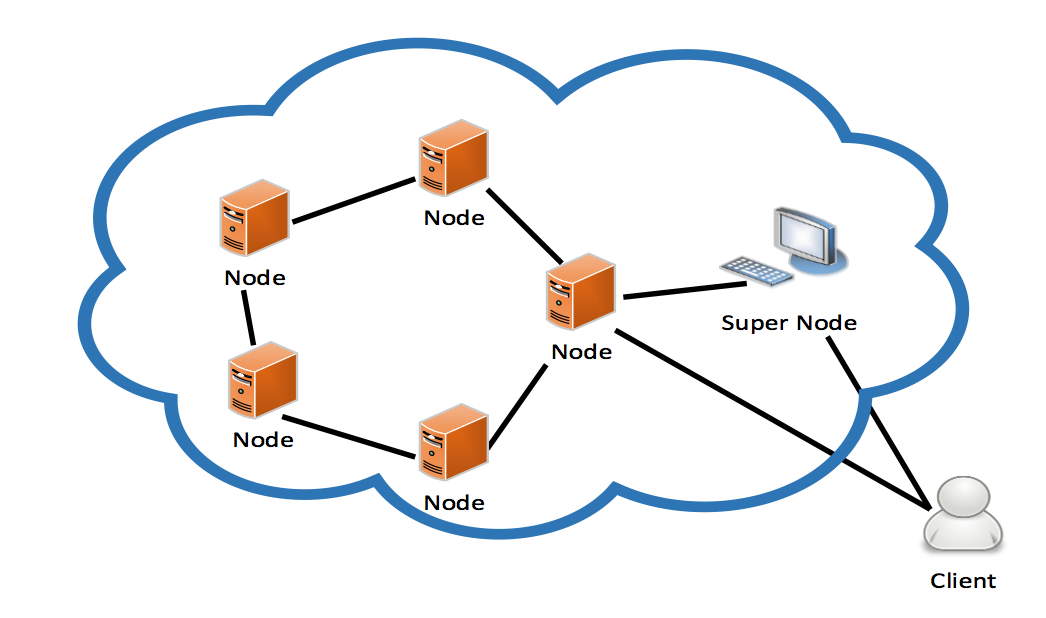Chord peer-to-peer distributed hash table protocol implemented in Go
Wikipedia page explaining the chord protocol
There is only one supernode in the system. The supernode is in charge of maintaining the state of the system. It keeps track of all the nodes in the system and synchronizes node joins. When a client wants to access the system for reading and writing, it contacts the supernode to get a random node in the system.
The system contains many nodes. Each node has an Id, a finger table, which is used for routing read and write requests to the correct nodes, and a memory mapped file system for reading and writing files. The filesystem uses the afero file system abstraction, which allows for different future implementations such as a cache on read file system, or a copy on write file system.
The supernode is used to orchestrate nodes joining the system. When a node wants to join, it sends a join request to the supernode. The supernode will respond with the list of nodes that are currently in the system. The node will then update it's local finger table and will find it's predecessor in the list. Once the node has taken care of it's local state, it will send a request to update the distributed hash table of each of the nodes in the list. After the system has been stabilized, the node will send a post join request to the supernode to let it know the node has joined the system properly and that the system is in a stable state.
Routing in the system is handled by each of the nodes. Each node has a finger table which is used to handle routing a request in O(log(n)) time. Routing works by assigning each node a distinct ID. The finger table uses successor(ID + 2^i) for keeping routing information of nodes across the system. This allows a node to route requests quickly without having to keep track of every node in the system. This means a node only has to keep track of 20 nodes when there are 1 million nodes in the system.
Reading and Writing to the system is done by contacting the random node returned from the supernode. When a request is made to the node, it hashes the filename, checks if the file belongs to the node, if it does then it's read/written. If it does not belong to the node, it's forwarded to the closest preceding node in the node's finger table recursively.
- Use Cobra to build modern cli for go-chord
- Create write and read for cli
- Create Dockerfiles and docker-compose to ease deployment and integration testing
To compile proto files: ./protos.sh Need to go into .pb.go files and change package names for correct importing
